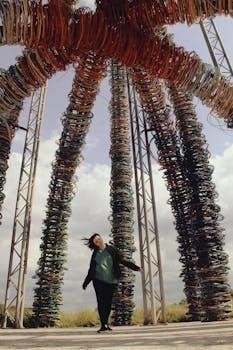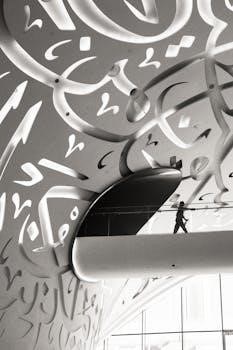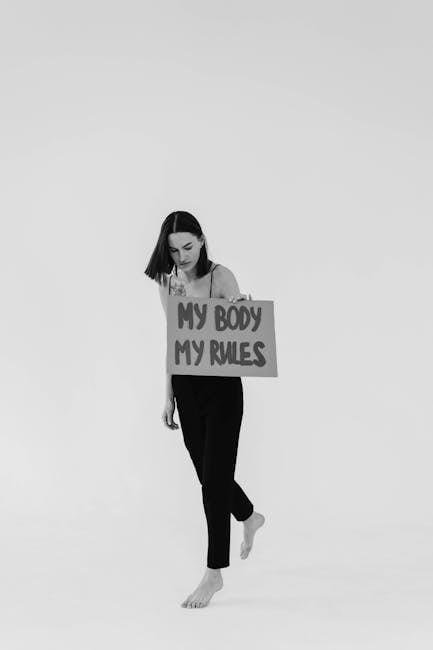SUNTUF Installation Overview
SUNTUF installation involves several key steps to ensure a successful and durable roofing project. Proper planning, cutting, and fastening are crucial for achieving a weatherproof structure. Remember to never step directly on panels.
Substructure Preparation
Before installing SUNTUF panels, it is essential to prepare the substructure properly. This involves ensuring that the purlins or supporting framework are correctly spaced and aligned according to the manufacturer’s recommendations. The substructure must be clean, dry, and free from any sharp objects that may damage the panels. Adequate support is critical for the overall stability of the roof, so verify the structural integrity of the existing framework. Correct spacing also prevents any unwanted panel bending or stress. Using a level will ensure the structure is straight and even for the installation. This step is critical for the longevity of the roofing system and helps to prevent damage from the elements.
Measuring and Cutting SUNTUF Sheets
Accurate measuring is critical before cutting SUNTUF sheets. Use a straight edge and appropriate cutting tools like a circular saw or utility knife, ensuring clean, precise cuts.
Cutting Techniques
When cutting SUNTUF panels, several methods can be employed depending on the tools available. A circular saw with a fine-tooth blade is effective for straight cuts, providing a clean edge. Alternatively, a utility knife or snips can be used for smaller adjustments or curved cuts, scoring the panel multiple times before snapping it along the line. Always use a straight edge as a guide and wear safety glasses. Ensure the panel is well-supported to prevent cracking or splintering during the cutting process. Cutting techniques must be adapted for different SUNTUF profiles and thicknesses, and proper tools are crucial for a safe and accurate cut.
Positioning SUNTUF Panels
Properly positioning SUNTUF panels is essential for a watertight and durable roof. Ensure correct overlap and alignment according to the manufacturer’s guidelines, considering the profile.
Overlap Guidelines
When positioning SUNTUF panels, it’s crucial to adhere to specific overlap guidelines. Proper overlap is essential for preventing leaks and ensuring the structural integrity of your roof. The amount of overlap required can vary depending on the roof pitch and the specific SUNTUF profile you are using. Generally, a minimum overlap of one corrugation or rib is recommended for standard applications. However, for lower roof pitches or areas with high wind exposure, a greater overlap may be necessary to provide additional protection against water penetration. Always consult the manufacturer’s instructions for precise overlap recommendations related to your specific SUNTUF panel type and installation context. These guidelines are paramount for a successful and long-lasting roofing solution.

Drilling for Fasteners
When drilling SUNTUF sheets, use the correct drill bit size to avoid cracking. Drill perpendicular to the sheet, and do not over-tighten fasteners for proper installation.
Recommended Drill Bits
For drilling SUNTUF polycarbonate sheets, it’s crucial to select the appropriate drill bit to prevent damage and ensure a clean hole. Using high-speed steel (HSS) drill bits is generally recommended. The drill bit size should be slightly larger than the fastener shank to allow for thermal expansion and contraction of the polycarbonate. A general recommendation is a bit size 1-2 mm larger than the screw shank. Avoid using dull or damaged bits, as this can cause cracking or crazing of the SUNTUF sheet. Always apply light, consistent pressure while drilling, and avoid forcing the drill bit through the material.
Fastening SUNTUF Sheets
Proper fastening is crucial for a secure SUNTUF installation. Use the correct fasteners, ensure proper placement, and avoid over-tightening the screws. This will maintain sheet integrity.
Fastener Selection and Placement
Choosing the right fasteners for SUNTUF sheets is essential for a long-lasting and secure installation. Select fasteners specifically designed for polycarbonate roofing, ensuring they are compatible with the material and provide adequate grip. Proper placement involves installing fasteners through the crests of the corrugations to maintain water tightness and prevent leaks. Avoid over-tightening, as this can damage the sheets and compromise their integrity, leading to potential cracking or failure. Always ensure fasteners are installed perpendicular to the sheet surface for optimal performance and longevity. Use appropriate washers to distribute pressure evenly.

Safety Considerations During Installation
Safety is paramount when installing SUNTUF. Always use stepping ladders or crawling boards, supported by at least three roof elements. Never step directly on the sheets, as they cannot support a person’s weight.
Working on Roofs Safely
Working on roofs requires careful attention to safety protocols. Always consider SUNTUF sheets as unsuitable for supporting a person’s weight. Utilize stepping ladders or crawling boards that are supported by a minimum of three structural roof elements. When installing or doing maintenance work, never step directly onto the sheets between purlins. Ensure that all tools and materials are properly secured to prevent them from falling. Wear appropriate safety gear, including non-slip footwear and eye protection. Be mindful of weather conditions, such as wind or rain, which can increase the risk of accidents. Following these guidelines will help you maintain a safe working environment during your SUNTUF installation project.

SUNTUF Accessories
A range of accessories is available for SUNTUF installations, including ridge caps and flashings. These components ensure a complete, weather-tight system, and are designed specifically for SUNTUF profiles.
Ridge Caps and Flashings
SUNTUF ridge caps and flashings are essential for creating a watertight seal at the roof’s peak and along its edges. These accessories, typically available in 4-2 L x 12 W for ridge caps and 4-2 L x 7 W for side ridge flashings, are designed for use with SUNTUF profile panels, ensuring compatibility and a professional finish. Proper installation of these components is crucial for preventing water ingress and ensuring the long-term performance of the roofing system. They are specifically manufactured for SUNTUF profiles, therefore may not be compatible with other products.

SUNTUF Profile Types
SUNTUF offers various profile types, including beehive and others, each designed for specific applications. These profiles impact load capacity and aesthetic qualities of the final installation.
Beehive and Other Profiles
SUNTUF panels come in diverse profiles, with the beehive profile being a popular choice for its unique aesthetic and structural properties. Other profiles include corrugated and trapezoidal designs, each offering different load-bearing capabilities and light diffusion characteristics. Selecting the right profile depends on project needs and design preferences. The beehive design provides a distinctive look while other profiles offer more traditional appearances. Consider the specific requirements of your project regarding light transmission, heat control and overall appearance before making a final profile selection, which will directly influence the outcome of the roof.




Leave a Reply
You must be logged in to post a comment.